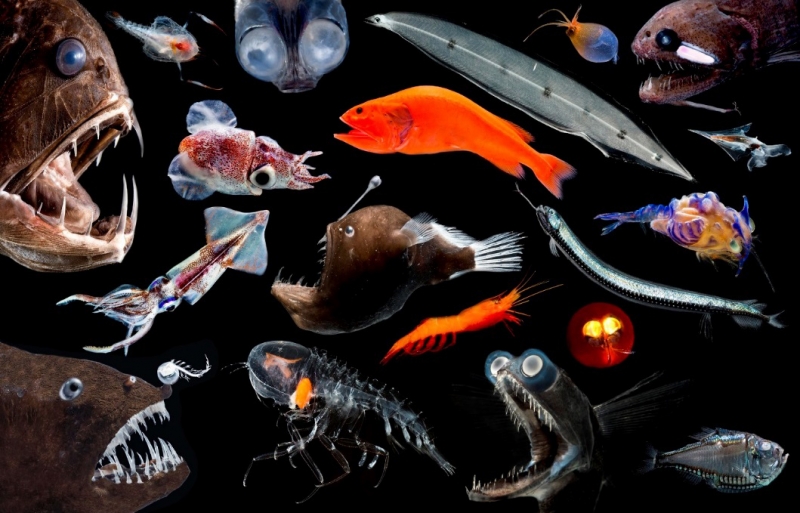w2: deep sea survival guide 2
deep sea creatures
Engineers in various field work together to construct underwater settlements that are specially designed to withstand the strong water pressure. These constructions utilise special and strong materials such as high-strength alloys, reinforced glass. To cope with the constantly changing underwater environment such as internal waves, multiple form of sound, temperature and electromagnetic wave sensors are deployed to monitor and forecast the underwater situation.
To build settlements in the deep sea, scientist must figure out how to stop relying on the land-based resources such as fossil fuels and discover new way of generating electricity and energy. Together humans build communities that are self-sufficient, using cutting-edge energy generation system such as underwater turbines that harnessing the kinetic energy from ocean currents. These turbines are designed to rotate as the current flow, converting the mechanical energy into electricity. These turbines account for most of the electricity used in the underwater settlements as they are efficient and environmentally-friendly.
By utilising the temperature difference between the warm surface waters and the colder depths of the ocean, Ocean Thermal Energy Conversion (OTEC) systems are employed for this purpose. OTEC systems use a fluid with a low boiling point, such as ammonia as a medium. The warm surface water is used to evaporates the fluid, while the resulting vapour is then used to drives a turbine, generating electricity. The vapour is then condensed using cold water from the deep sea.
On the ocean's surface, extensive farms of bioluminescent algae are cultivated to harness sunlight. These algae emit light, which is captured and converted into usable energy through a system of bioreactors. The electricity produced by these bioluminescent algae can serve as a supplementary power source, and integrated into the existing undersea power grid as a back-up. To facilitate large-scale cultivation of bioluminescent algae, specialized bioreactors are designed with transparent walls that enable sunlight penetration, thereby stimulating photosynthesis and promoting algae growth
bioluminescent algae on a beach
These sustainable energy generation methods can be employed in deep sea habitat, allowing them to become self-sufficient and reducing the dependency on traditional fossil fuel-based energy sources. By utilising the power of ocean currents or temperature differences, these systems contribute to a greener and more sustainable future.



Comments
Post a Comment